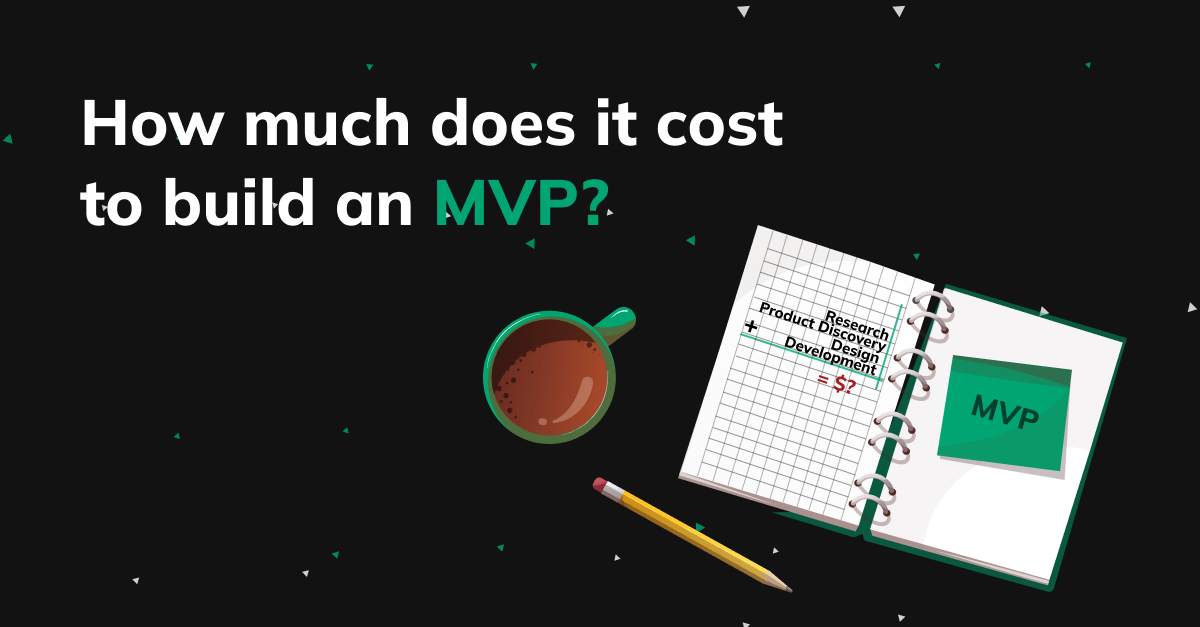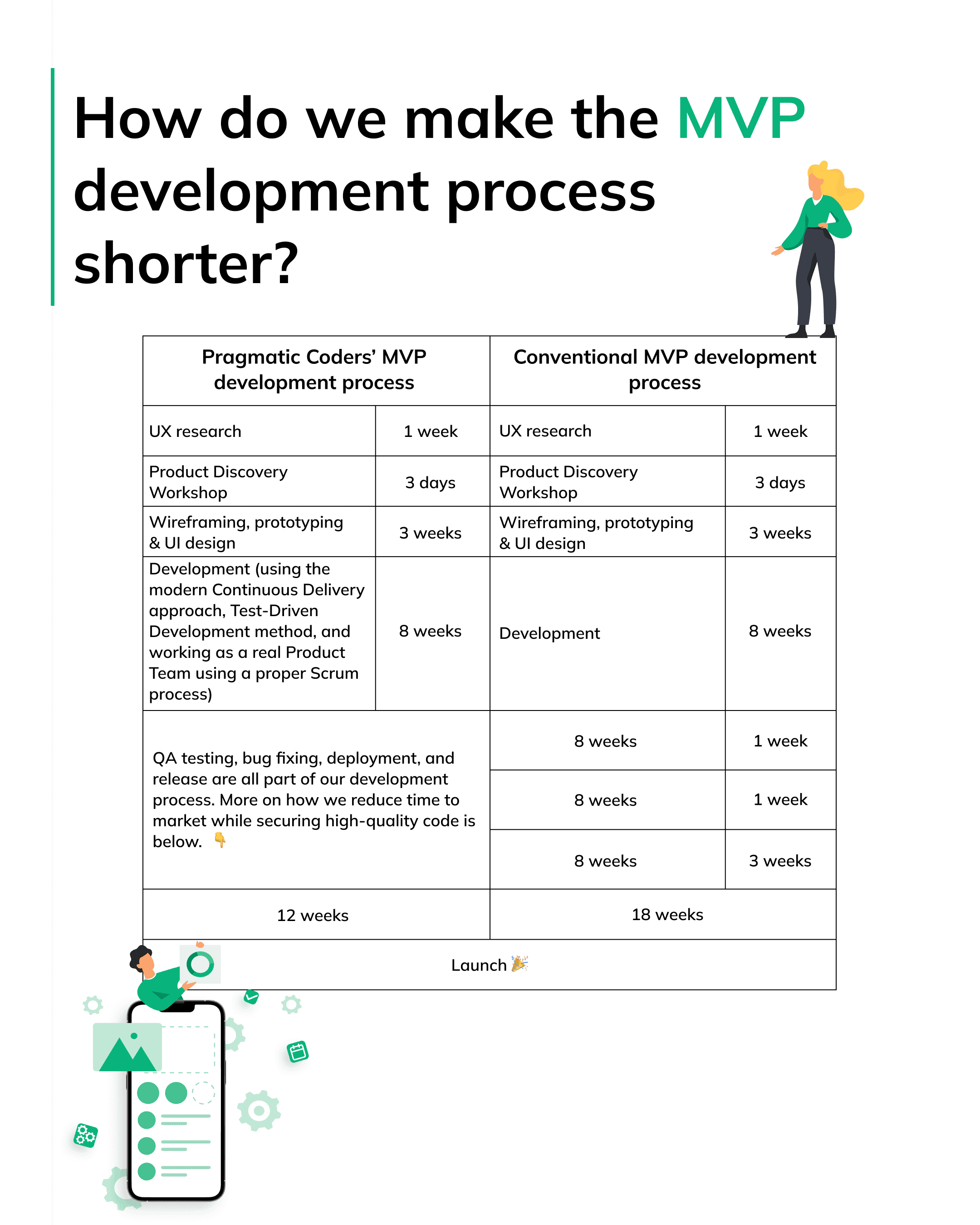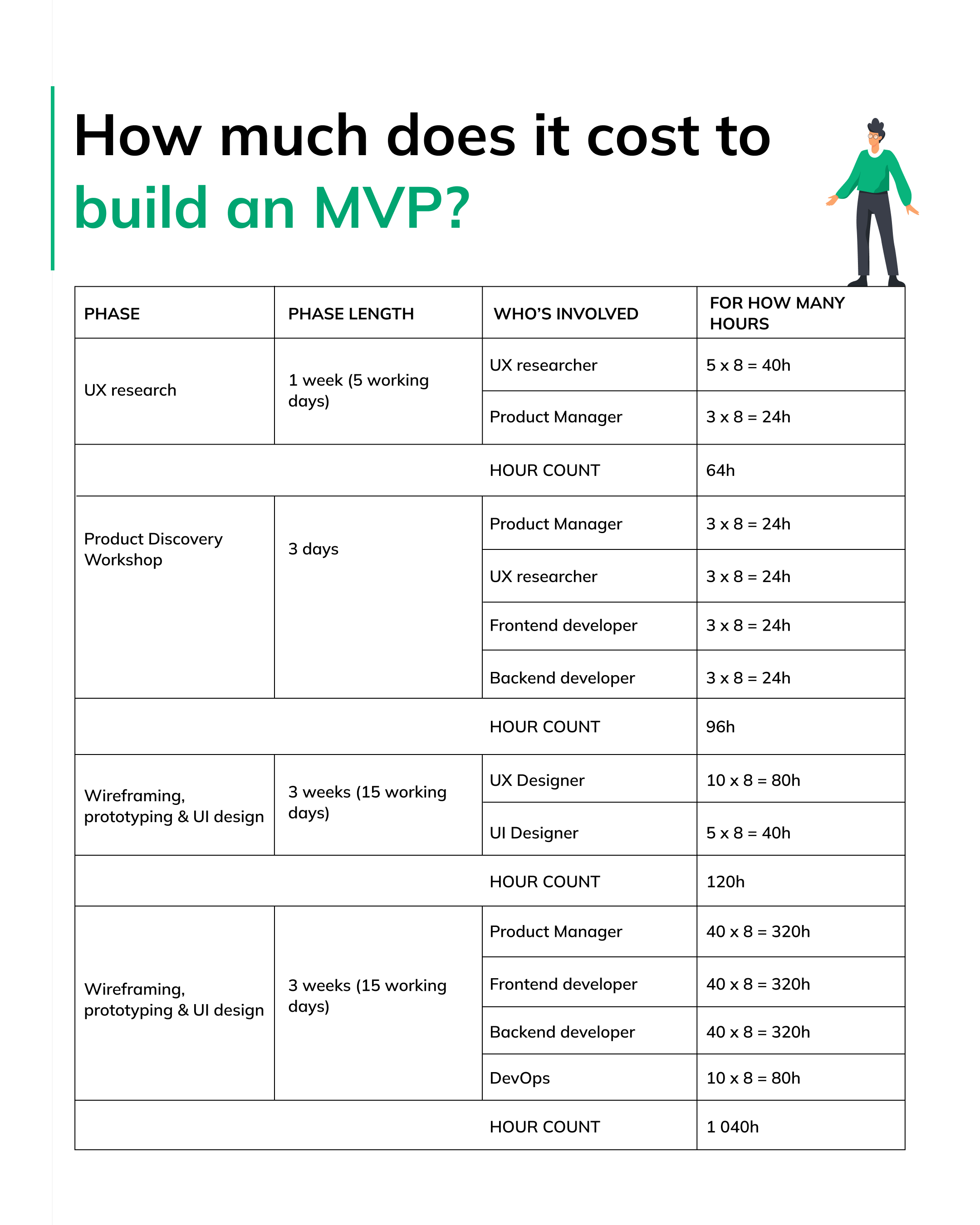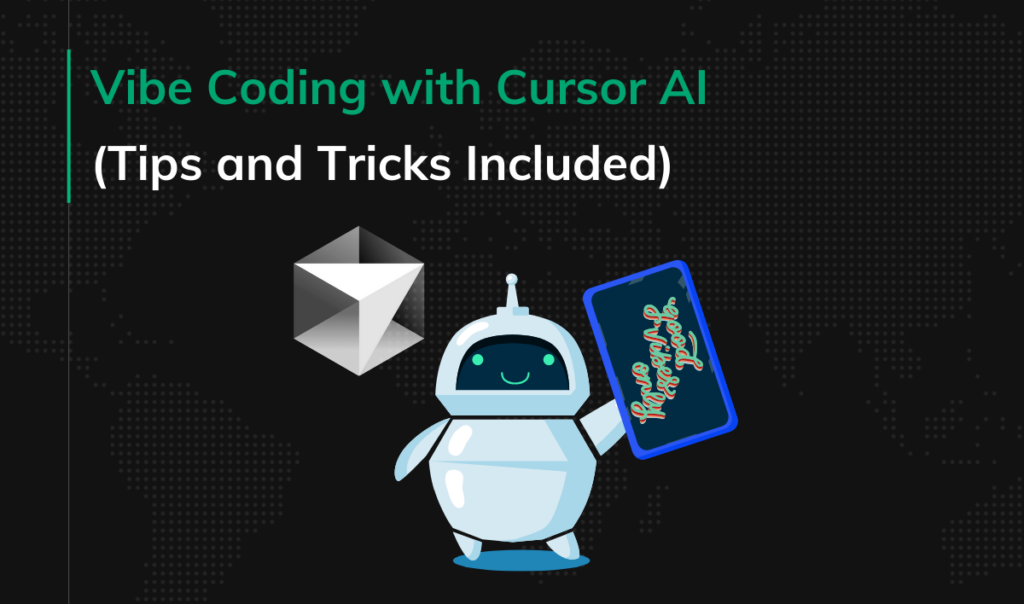How Long Does MVP Development Take & What’s the Cost in 2025?

Building a Minimum Viable Product (MVP) is vital for anyone creating digital products. Still, the time and cost involved are key concerns. In this article, we explore the factors that affect the timeline and budget of MVP development.
What is an MVP?
A Minimum Viable Product (MVP) is a basic version of a product or service that includes essential features and functionality. It serves as an initial prototype to test the market and gather feedback from potential customers.
From a business owner’s perspective, developing an MVP is crucial. These are two main benefits that come with MVPs.
Validate your business idea
Our Product Managers won’t let you out to the market with a product with no chance of success. Still, we’re no fortunetellers and can’t guarantee that the product will conquer the world. That’s why you launch an MVP – to ultimately test it with users and ensure the product is worth further investments and development.
Minimize risks of wasting more time and money
Imagine this: you’ve launched your MVP; unfortunately, it turns out that the product doesn’t resonate with users. You reconsider your assumptions, pivot, or maybe even finish your endeavor. However, whatever happens, you’ve just saved a tremendous amount of money and time you would’ve spent developing THE FULL PRODUCT that would have flopped anyway.
How long does it take to build an MVP?
To make our calculations less hypothetical, let’s base it on an example.
Let’s assume we’re working on an AI-powered receipt scanning and expense tracking application.
Here’s the product mission statement for it:
For small business owners and freelancers
Who struggle with managing their expenses and organizing receipts
ExpenseTracker is a receipt-scanning and expense-tracking application
That streamlines the process of capturing and categorizing expenses
Unlike manual expense tracking or generic note-taking apps
Our product utilizes AI-powered character recognition to automate receipt scanning and data extraction, simplifying expense management and saving time for busy professionals.
Let’s see how long it would take to build a high-quality app with the described functionality.
DISCLAIMER: As we explained in our “how to start a startup” e-book, product development is not a linear (sequential) process, what you see below is not a step-by-step list. However, we had to put these areas in some order for the article’s sake. The numbers in brackets refer to the amount of time spent on given areas – it’s “one week,” not: “the first week.”
Research (1+ week)
DISCLAIMER: One week for research may be enough, but it can also take up to 4 weeks, depending on the nature of the problem and the topic that needs to be addressed. The client’s approach can also vary widely, requiring comprehensive research on ten target groups, or it could be very specific. Moreover, the phase can be shorter if there’s already some prior research done. Such prior research can be automated with our AI-based Market Research Tool.
GOALS
- Conduct UX research to understand potential target audience standard behaviors, mental models, needs, and pain points.
- Conduct competition analysis to identify gaps and potential areas of improvement.
- Analyze the results.
WHO DO YOU NEED?
Both a UX researcher and a Product Manager are involved in this stage. They discuss the business goals and context of the project; the UX specialist will usually ask the Product Manager for specific information they would like to get from the UX research. Often, it’s the Product Manager who conducts competitive research.
UX researcher (1 week), Product Manager (3 days)
Product Discovery Workshop (3 days)
GOALS
- Gather key stakeholders, including the business founders, a product manager, a UX designer, and developers.
- Discuss research findings and refine product ideas, goals, and target audience.
- Identify and prioritize essential features and functionalities.
- Define the MVP scope based on time and resource constraints.
WHO DO YOU NEED?
Product manager (3 days), UX designer (3 days), fronted developer (3 days), backend developer (3 days)
Wireframing and Prototyping (2+ weeks)
GOALS
- Collaborate with a UX designer to create product structure & wireframes.
- Work with a UI designer to add visual identity to the interface.
- Collaborate with UX designers to create interactive prototypes for user testing.
- Iterate on the design based on feedback and usability testing.
WHO DO YOU NEED?
UX Designer (2+ weeks), UI Designer (1 week)
Development (8 weeks)
Front-end + back-end + DevOps development
GOALS
- Convert the UI designs into functional frontend code.
- Implement responsive design to ensure the app works well on various devices.
- Design and develop the server-side architecture using a suitable programming language.
- Set up a database to store user information, tasks, and other relevant data.
- Implement authentication and authorization mechanisms for user access control.
WHO DO YOU NEED?
Product manager (for 8 weeks), frontend developer (for 8 weeks), backend developer (for 8 weeks), DevOps (2 weeks)
Alternatively: Full stack developer (for 16 weeks – but your time to market will be longer)
Alternatively: Two full stack developers (for 8 weeks)
+
Post-Launch Activities (from 1 week to infinity)
GOALS
- Monitor app performance and collect user feedback for further improvements.
- Address any user-reported issues or feature requests.
- Plan for future iterations and enhancements based on user insights and market demands.
WHO DO YOU NEED?
Product manager, FrontendFrontend developer, backend developer, DevOps. UX researchers, UX designers, UI designers, marketing specialists…
IN SUMMARY: Building an MVP for the product example described above will take approximately 12 weeks and 3 days.
MVP development process optimization

Nonetheless, it is crucial to note again that this process is far from linear. For instance, UX designers can efficiently craft wireframes and prototypes parallel to the development phase. This synergy implies that the time to market can be further reduced, resulting in an impressive timeline of just 10 to 12 weeks.
With every product delivered, we’ve perfected the MVP development process to make it as effective and efficient as possible. This led us to modify the typical approach to building MVPs to one that delivers much better results.
- Quality Assurance. Often, once the development’s done, many software providers move on to the quality assurance & testing stage. In most cases, they hire a tester (part-time or full-time) for the entire phase. At Pragmatic Coders, testing and quality checking is an ongoing process our developers take care of. This lets us cut costs, drastically reduce the number of bugs, and monitor the quality of code on the fly. The code we produce is tested up to four times before it’s finally approved.
- Modern development approaches. After the testing phase, many software providers usually need one more week to prepare the app for deployment to production servers and set up a continuous integration and deployment pipeline for efficient updates. In our case, the apps we develop are released to app stores and available for closed beta testing multiple times DURING the development stage, so launching them to users is just a “one-click.” We don’t need extra time to stabilize the app or prepare for deployment thanks to abandoning archaic product development methods in favor of modern Agile approaches such as Continuous Delivery, Test-Driven Development, Scrum, etc.
- We rely on product management instead of project management. Product managers focus on providing maximum value with a minimal budget in record time to create as much revenue as possible. Our Product Managers are present throughout the entire development process to coordinate all aspects of the product’s lifecycle and ensure that the product meets customer needs and aligns with business objectives.
- A perfectly implemented Scrum method. Scrum allows for iterative and incremental development, enabling us to gather early feedback and make necessary adjustments, resulting in better MVP outcomes. Scrum’s emphasis on cross-functional and self-organizing teams facilitates efficient collaboration and autonomy, improving productivity and the overall results we deliver for our clients.
HOW MUCH DOES IT COST TO BUILD AN MVP?
Now let’s calculate approximately how much it would cost to build the Minimum Viable Product. We’re basing the numbers on our assumptions described above. Also, we’ll be sticking to our own MVP development process.
ADDITIONALLY:
- The cost of one hour of work of UX designers, UI designers, Product Managers, and developers can vary a lot depending on the location. For example, in Eastern Europe (countries such as Poland, Ukraine, or Romania), the prices will usually revolve around 60-75 USD. On the contrary, you would pay $75-100+ for the same services in the US. Let’s assume you’re working with a product management company from Eastern Europe.
- 1 week = 5 working days. 1 working day = 8 hours.

Suppose 1 hour of work costs $60; then the overall cost will be $79,200. If the hourly wage is $75, the overall cost would be $99,000.
Conclusions
How long does it take to build an MVP?
It can take as short as 10 ten 12 weeks to build and launch an MVP.
How much money do you need to build an MVP?
According to what we described above, MVP development could cost even between $79,200 – $99,000 if done right.
If you’re already thinking about reducing this cost, you might want to look at our software outsourcing guide.
Though developing a Minimum Viable Product doesn’t need to cost you a fortune, there are a few things to do before you start building it to save even more money and time – check the article “Always be launching! The greatest fear of every founder” to learn more.




